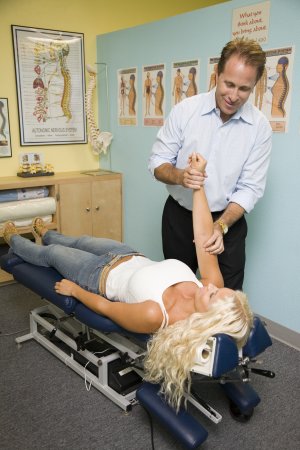Chiropractic Continuing Education
By Michael Dorausch, D.C.
This post is intended to serve as an online continuing education resource for chiropractors seeking information regarding postgraduate studies, license renewal, and other sources of training available to the chiropractic profession.
The phrase Chiropractic Continuing Education typically refers to educational studies that are required for license renewal, for already licensed doctors of chiropractic. This form of education may also be referred to as relicensing courses, postgraduate studies, license renewal seminars, and CE (short for continuing education).
 Types of Continuing Education
Types of Continuing Education
In the industry of chiropractic, postgraduate education typically focuses on core topics such as chiropractic technique, chiropractic based radiology, and ancillary services (such as nutrition or sports therapy).
In the US, the amount of hours required for continuing education varies from state to state, with 12 to 24 hours per year being a common number of hours required in many US states.
Some of the most common programs available as postgraduate studies are one and two-day seminars. These types of events are typically held on weekends because chiropractors tend to work Monday through Friday, allowing greater attendance during weekend scheduled programs.
Most of these events are held in classrooms style settings, and educational events can range from small groups of chiropractors with a single presenter, to large groups (often held and conference centers and resort hotels) that feature a number of educational chiropractic speakers.
Postgraduate Terminology
It’s not uncommon to see the term CE for DC which is an abbreviation for Continuing Education for Doctors of Chiropractic. The term accredited is used to describe whether a particular program has been approved as a valid source for relicensing credits in a specific state. Accreditation varies from state to state so it is recommended that all doctors of chiropractic check the accreditation status for programs they are attending, if they are planning to apply the educational hours as relicensing credits.
The term continuing education credits refers to those hours that may be applied to renewing licensure. Most educational seminars that provide credits break them down into varying categories. As an example, a doctor of chiropractic could attend a 12 hour relicensing event, with four of those hours going toward continuing education credit for chiropractic technique (such as Gonstead, Thompson Drop, Upper Cervical Specific).
Not all postgraduate studies all are applied towards license renewal. Chiropractors may attend training courses, often referred to as modules, that can take up to a year or more to complete. These modules can focus on a number of different topics, including sports chiropractic, biomechanics, orthopedics, diagnosis of particular conditions, pediatrics, philosophy, and others. These types of programs are usually taught separate from license renewal styled continuing education courses, as their attendance is voluntary, and educational hours are not recognized by health-care related state boards. These modular programs oftentimes allow a chiropractor to add additional initials to their title of DC (short for doctor of chiropractic). DACBR is an example as it stands for Diplomate, American Chiropractic Board of Radiology.
CE Sponsors
Relicensing courses are almost always sponsored by a chiropractic college (sometimes a single course is sponsored by more than one school). These programs may or may not be held on chiropractic campuses, but the school’s continuing education staff will typically handle the processing of paperwork relating to the courses being provided. When chiropractors receive brochures and fliers in the mail, it’s not uncommon to see messages that say Sponsored by Texas Chiropractic College, Sponsored by Life Chiropractic College West, or something similar. Event sponsorships are sometimes also provided by equipment manufactures, nutritional companies, medical orthopedic groups, MRI centers, and even surgical facilities.
Relicensing Courses
I mentioned earlier that these courses may also be referred to as seminars, events, and training. Before one attends one of these courses, it’s advisable to check that continuing education credits can be applied as valid in one’s particular state of practice.
Three related resources include the Chiropractic Continuing Education Database (features CE related as well as non accredited seminars), education related archived news, and a list of accredited colleges that provide chiropractic education in the United States.
Other Considerations
Some Chiropractic Continuing Education programs, seminars, and events, can be attended by non-chiropractor’s. While no licensing credit is given, it’s not uncommon to find medical doctors, attorneys, nurses, nutritional experts, physical therapists, and acupuncturists attending chiropractic relicensing programs. For these attendees, it’s often that these programs are provided at a discount, as there is less paperwork involved for the event organizers, and records do not have to be kept for national or state board departments.



I was interested to read a little about your CE requirements in the USA. In Australia, we have a similar requirement of about 20 hours. Kiro Kids is an Australian company providing CE for chiropractors and we will be visiting the US in 2008 presenting our new neurologically based technique NeuroImpulse Protocol. See http://neuroimpulse.com.
CE requirements in the US vary from state to state. California for example has a 12 hours per year requirement with 4 of those hours assigned to adjustive technique.